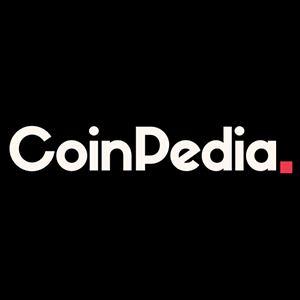Crypto Price Analysis 5-6: BITCOIN: BTC, ETHEREUM: ETH, SOLANA: SOL, BITTENSOR: TAO, ARBITRUM: ARB, JUPITER: JUP, CELESTIA: TIA
11 min read
The crypto market remained stationary on Monday, registering only a marginal decline as its market cap fell to $2.94 trillion. Price action was mixed as Bitcoin (BTC) and Ethereum (ETH) registered marginal increases, while others registered notable declines. BTC is marginally up over the past 24 hours as it struggles to reclaim $95,000. Meanwhile, ETH is struggling to stay above $1,800 as momentum wanes. Ripple (XRP) is down over 2% and trading at $2.11, and Solana (SOL) is down nearly 1% as it struggles to regain momentum and reclaim $150. Dogecoin (DOGE) , Cardano (ADA) , Chainlink (LINK) , Stellar (XLM) , Toncoin (TON) , Hedera (HBAR) , Litecoin (LTC) , and Polkadot (DOT) also registered notable declines. VanEck Files For BNB ETF Asset manager VanEck has filed for permission to list a BNB ETF. BNB is the native token of the BNB Chain. The ETF is designed to accumulate spot BNB tokens. Stakers may stake a portion of the fund’s assets through one or more verified staking providers. The filing marks the first time an asset manager has filed for a BNB ETF in the US. BNB has a market capitalization of around $84 billion. As of May 5, stakers can earn a yield of 2.5% on their BNB tokens. New Crypto Bill Draft To Curb Big Crypto Firm Influence According to executives from Paradigm, the new “Digital Asset Market Structure Discussion Draft” could reduce the dominance of large crypto firms and help promote greater market participation in the broader market. The draft is an incremental rewrite of the Financial Innovation and Technology for the 21st Century Act (FIT21). One of the major changes in the draft is the definition of an affiliated person. The draft defines an affiliated person as anyone who owns more than 1% of a digital commodity issued by a project, a move experts believe could curb the influence of big crypto firms and promote greater participation in the crypto ecosystem. “This is a portent of the entire bill. There are often criticisms of crypto being too dominated by a few large firms. This bill makes clear the regulatory regime proposed is going to push against that fact and strongly encourage more small-d ‘democratization’ of the space.” The draft also defines a mature blockchain system as one that, together with its related digital commodity, is not under the common control of any individual or group. It also stated that the United States Securities and Exchange Commission (SEC) will be the primary authority regulating activity on all crypto networks. The draft also clarified that decentralized finance trading protocols allow users to engage in a financial transaction in a “self-directed manner.” Protocols meeting this criteria are exempt from registering as digital commodity brokers or dealers. Trump Crypto Deals Provoke Backlash Senate Democrats have demanded changes to crypto legislation pending in Congress in response to growing evidence the Trump family is using its connections and President Trump’s power to profit from crypto trading. The pushback intensified after a closed-door meeting during which Senator Chuck Schumer, the Democrat leader, urged colleagues not to commit to voting for the so-called GENIUS Act, a bill backed by the crypto industry. The bill appeared to be sailing through with support from both parties and was scheduled for a procedural vote this week. However, Senate Democrats have expressed concerns the legislation would directly benefit the Trump family’s crypto business. One of the concerns raised is about the Trump-affiliated World Liberty Financial, which recently secured a deal to take $2 billion in deposits from an Emirati venture fund backed by the government of Abu Dhabi. Senator Jeff Merkley, Democrat of Oregon, stated, “It’s a selling of influence, a conflict of interest, just a massive form of corruption we haven’t witnessed. And it needs to be ended.” Senator Elizabeth Warren urged Democrats to take a stand on the matter, stating the legislation would make it easier for the President and his family to line their own pockets. Warren stated, “This is corruption and no senator should support it.” Bitcoin (BTC) Price Analysis Bitcoin (BTC) continued to trade below $95,000 as it started the week on a relatively quiet note. The flagship cryptocurrency lost momentum over the weekend after racing to an intraday high of $98,000 on Friday as selling pressure and profit-taking took their toll on the price. BTC struggled to regain momentum during the ongoing session as it attempted to reclaim $90,000. The price action means BTC remains firmly entrenched within its trading range as markets exercise caution, thanks to tariff concerns and the economic fallout of a trade war with China. As a result of the weekend decline, BTC remains between the $90,000-$97000 trading range established over the past week as its April rally cools. BTC’s price action lost momentum after getting caught up in a risk-averse sentiment as markets fretted about renewed fears of a US-China trade war, slowing economic growth, and more tariffs. While BTC and the broader crypto markets are not directly impacted by disruptions in global trade, their speculative nature makes them vulnerable to shifts in market sentiment, leading to volatility. Analysts believe BTC is at a vital decision point, with one analyst discussing how the flagship cryptocurrency is looking based on its UTXO Realized Price Distribution (URPD). The URPD tells us what part of the BTC supply was last purchased at the different price levels it has reached. The analyst stated that BTC sits right in the middle of a decision point as any large move up or down from that point would impact the profit and loss status of a large amount of Bitcoin addresses. BTC registered a notable increase on Friday (April 28), rising nearly 1% to $94,776. However, it lost momentum over the weekend, registering a marginal decline on Saturday and falling 0.98% on Sunday to settle at $93,803. The price recovered on Monday, registering an increase of 1.29% to claim $95,000 and settle at $95,002. Despite the positive start, BTC was back in the red on Tuesday, falling 0.70% and settling at $94,342. The price encountered volatility on Wednesday as buyers and sellers struggled to establish control. Buyers ultimately gained the upper hand as BTC registered a marginal decline and settled at $94,155. Source: TradingView Bullish sentiment returned on Thursday as BTC surged over 2% to cross $96,000 and settle at $96,458. BTC continued to push higher on Friday, rising to an intraday high of $98,000 before declining and settling at $96,939, ultimately registering an increase of 0.50%. However, price action turned bearish over the weekend thanks to growing selling pressure and profit-taking at higher levels. As a result, BTC fell 0.98% on Saturday and 1.66% on Sunday to slip below $95,000 and settle at $94,390. BTC started the current week positively, rising 0.41% and settling at $94,773. However, the flagship cryptocurrency has been unable to reclaim $95,000, with the price down 0.33% during the ongoing session and trading around $94,460. Ethereum (ETH) Price Analysis Ethereum (ETH) is set for its biggest code change since the Merge, with the Pectra upgrade set to launch on May 7. ETH’s consolidation continues at around $1,850, with substantial price action expected after the upgrade goes live on the Ethereum mainnet. The Pectra upgrade is a sweeping overhaul that significantly improves efficiency, user experience, and scalability. The upgrade combines two simultaneous upgrades, Prague (execution layer) and Electra (consensus layer). The upgrade introduces 11 major code changes, promising smoother transactions, smarter wallets, and a streamlined staking process. ETH has spent months consolidating under downward pressure and has traded between $1,700 and $1,870 since April 23, with neither buyers nor sellers ceding ground. On-chain indicators suggest a potential momentum change for the world’s second-largest cryptocurrency following the Pectra upgrade. ETH registered a notable increase on Friday (April 25), rising nearly 1% and settling at $1,786. Buyers retained control on Saturday as the price registered a rise of 1.97% to cross the 50-day SMA and $1,800 and settle at $1,821. However, the price was back in the red on Sunday, dropping nearly 2%, slipping below the 50-day SMA and $1,800 and settling at $1,792. ETH faced volatility on Monday as buyers and sellers struggled to establish control. Buyers ultimately gained the upper hand as ETH registered a marginal increase and settled at $1,799. Price action turned bearish on Tuesday and Wednesday as ETH registered marginal declines on both days and settled at $1,794. Source: TradingView Bullish sentiment returned to the market on Thursday as ETH registered an increase of over 2% to reclaim $1,800 and settle at $1,838. Buyers retained control on Friday despite price action losing momentum as ETH registered a marginal increase and settled at $1,842, but not before reaching an intraday high of $1,870. ETH fell back into the red over the weekend, dropping 0.39% on Saturday and 1.34% on Sunday to settle at $1,810. ETH started the current week on a bullish note, rising 0.57% to $1,821. However, the price is back in the red during the ongoing session, with the price down over 1% and trading below $1,800 at $1,798. Solana (SOL) Price Analysis Solana (SOL) could also see a substantial uptick over the next few sessions as it prepares for a major upgrade to its validators, increasing its scalability and throughput. The upgrade hopes to make SOL more scalable, increasing speed and throughput. Solana’s development optimization service, Helius, announced on May 5 that it was rolling out an update to the Solana validator client. The upgrade will increase block capacity by 20% and introduce network scalability and throughput improvements. “big news Solana blocks are getting 20% bigger, meaning more TPS, very soon that + a ton of other improvements to the network are coming with Agave 2.2.” The upgrade will raise block limits from 50 million to 60 million compute units, significantly increasing throughput. Larger block limits will allow the network to process more transactions per second, making the blockchain more scalable. The upgrade would also ease congestion, a constant issue on Solana. SOL has been primarily bearish over the past week, dropping 1.10% on Friday (April 25) and settling at $150. Price action remained bearish over the weekend as SOL fell 1.08% on Saturday and nearly 1% on Sunday, slipping below $150 and settling at $148. SOL encountered volatility on Monday as buyers and sellers struggled to establish control. Sellers ultimately gained the upper hand as the price registered a marginal decline and settled at $147. SOL continued to drop on Tuesday, falling nearly 1% to $146. The price fell to an intraday low of $140 on Wednesday as selling pressure intensified. However, SOL rebounded from this level to register an increase of nearly 1% and settle at $147. Source: TradingView Price action remained bullish on Thursday as SOL rose over 2% to reclaim $150. Buyers lost momentum on Friday as the price fell nearly 2%, slipping below $150 and settling at $148. Sellers retained control over the weekend as SOL fell almost 1% on Saturday and 2% on Sunday to settle at $144. SOL started the current week positively, rising nearly 2% to $146. However, it is back in the red during the ongoing session, down 1.56% and trading at $144 as sellers look to drive it below $140. Bittensor (TAO) Price Analysis Bittensor (TAO) is trading between $330 and $400 as it struggles to cross $400. TAO’s momentum stalled over the previous weekend, falling over 1% on Friday (April 25) and 1.41% on Saturday to $349. Despite the bearish sentiment, TAO recovered on Sunday, rising over 3% to end the weekend at $360. Buyers retained control on Monday despite volatility as TAO rose nearly 5% to $378. However, price action turned bearish on Tuesday as TAO fell over 3% to $366. Selling pressure intensified on Wednesday as the price plunged to an intraday low of $335. It rebounded from this level to reclaim $350 and settle at $354, ultimately registering a drop of over 3%. Source: TradingView TAO recovered on Thursday, rising to an intraday high of $375. However, it could not stay at this level and settled at $358, ultimately registering an increase of nearly 1%. Bullish sentiment intensified on Friday as TAO rallied almost 5% and settled at $374. However, buyers lost momentum over the weekend as TAO fell nearly 6% on Saturday and settled at $353. Sellers retained control on Sunday as the price fell 2.53%, slipping below $350 and settling at $344. TAO started the current week on a bullish note, surging over 9% to reclaim $350 and settle at $375. However, price action is back to bearish during the ongoing session, with TAO down 2.51% and trading around $365. Arbitrum (ARB) Price Analysis Arbitrum (ARB) started the previous weekend on a bullish note, rising 1.88% on Saturday and settling at $0.353. However, ARB lost momentum on Sunday, plunging nearly 5% to end the weekend at $0.336. ARB encountered volatility on Monday as buyers and sellers struggled to establish control. Sellers ultimately gained the upper hand as the price registered a marginal decline and settled at $0.335. Bearish sentiment intensified on Tuesday as ARB fell over 2%, slipping below the 50-day SMA and settling at $0.327. ARB plunged to an intraday low of $0.304 as selling pressure intensified. However, the price rebounded from this level to settle at $0.325, ultimately registering a marginal decline. Source: TradingView ARB recovered on Thursday, rising over 4% to cross the 50-day SMA and settle at $0.339. Despite the positive sentiment, ARB was back in the red on Friday, registering a marginal drop. Selling pressure registered a substantial increase on Saturday as ARB plunged nearly 6%, slipping below the 50-day SMA and settling at $0.319. ARB continued to drop on Sunday, going below the 20-day SMA after a drop of nearly 3% and settling at $0.310. ARB started the week positively, reaching an intraday high of $0.321. However, it lost momentum after reaching this level and dropped to $0.311, ultimately registering a marginal increase. The current session sees ARB down nearly 2%, trading at 40.305. Jupiter (JUP) Price Analysis Juputer’s (JUP) rally lost momentum on Friday (April 25) after reaching an intraday high of $0.506. The price ultimately settled at $0.483 and dropped 0.61% on Saturday, dropping to $0.480. Bearish sentiment intensified on Sunday as the price fell over 3% to end the weekend at $0.464. JUP encountered volatility on Monday as buyers and sellers struggled to establish control. Buyers ultimately gained the upper hand as the price rose over 1% and settled at $0.469. Sellers were back in control on Tuesday as JUP dropped over 4% to $0.449. JUP plunged to an intraday low of $0.431 on Wednesday as selling pressure intensified. However, it rebounded from this level to register an increase of 4.34% and settle at $0.469. Source: TradingView Price action turned bearish on Thursday as JUP fell 1.37% to $0.462. Sellers retained control on Friday as the price registered a marginal decline. Selling pressure intensified on Saturday as JUP plunged 6.50%, slipping below the 50-day SMA and settling at $0.432. Sellers retained control on Sunday as the price fell 1.59%, falling below the 20-day SMA and settling at $0.426. JUP started the current week positively, rising almost 1% to $0.429. However, the price is back in the red during the ongoing session, down over 3% and trading at $0.416. Celestia (TIA) Price Analysis Celestia (TIA) was unsuccessful in crossing the 50-day SMA on Saturday (April 26), despite rising over 2%. Bulls lost momentum on Sunday, and the price fell 2.49% to $2.86. Despite the selling pressure, TIA registered an increase of 1.96% on Monday and settled at $2.92, but not before reaching an intraday high of $2.92. Bearish sentiment returned on Tuesday as the price plunged almost 7% to $2.73. Sellers retained control on Wednesday as TIA fell 1.74% to $2.65. Buyers attempted a recovery on Thursday as TIA reached an intraday high of $2.78. However, it lost momentum after reaching this level and dropped to $2.63. Source: TradingView TIA fell below the 20-day SMA on Friday, dropping nearly 3% to $2.55. Price action remained bearish over the weekend as TIA fell nearly 4% on Saturday and almost 3% on Sunday, slipping below $2.50 and settling at $2.38. TIA encountered volatility on Monday as buyers and sellers struggled to establish control. Sellers ultimately gained the upper hand as the price fell over 1% to $2.36. The current session sees TIA marginally down, trading at $2.34. Disclaimer: This article is provided for informational purposes only. It is not offered or intended to be used as legal, tax, investment, financial, or other advice.

Source: Crypto Daily


